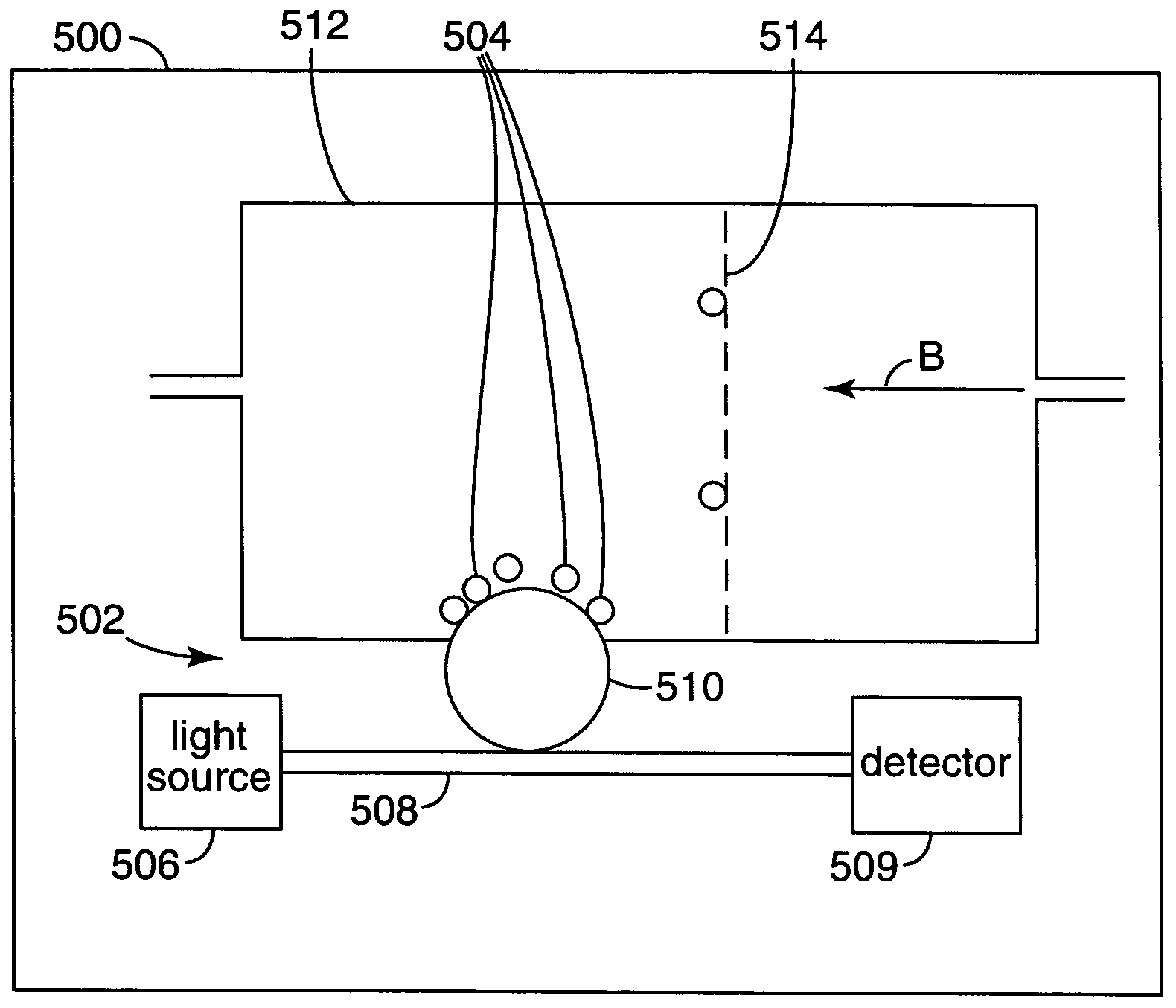Systems and methods for biosensing and microresonator sensors for same
a microresonator and biosensor technology, applied in the field of systems and methods for detecting bacteria, can solve the problems of inability to distinguish between bacteria-surface bound lps and free (soluble) lps in solution, require highly trained laboratory personnel, and require days to obtain, and achieve the effect of less expensive and rapid results
- Summary
- Abstract
- Description
- Claims
- Application Information
AI Technical Summary
Benefits of technology
Problems solved by technology
Method used
Image
Examples
experiment b
io, Low Concentration
[0086]At lower concentrations, however, the recovery ratio is less than when the concentration is 107 cells / ml. For example, at a concentration of 104 cells / ml, the recovery ratio fell to 24%. This reduction in recovery ratio was attributed, at least in part, to the dead volume caused by the adsorption of bacteria to the filter membrane. It was found that the recovery ratio increased when filters with a smaller area were used. For example, when the filter diameter was reduced to 13 mm, the recovery ratio increased to 53% (on average for three experiments, see Tables II–IV below). It should be noted that in actual microsphere biosensor chambers, the filter diameter may be as small as 1 mm, resulting in an even smaller dead volume, and increased recovery ratio.
[0087]Tables II–IV show the recovery results for each 1 ml backflow when the Staph Aureus concentration is varied with a value of about 104 cells / ml. For these experiments, the filters were Acrodisc® syringe...
PUM
| Property | Measurement | Unit |
|---|---|---|
| pore size | aaaaa | aaaaa |
| pore size | aaaaa | aaaaa |
| pore size | aaaaa | aaaaa |
Abstract
Description
Claims
Application Information
 Login to View More
Login to View More - R&D
- Intellectual Property
- Life Sciences
- Materials
- Tech Scout
- Unparalleled Data Quality
- Higher Quality Content
- 60% Fewer Hallucinations
Browse by: Latest US Patents, China's latest patents, Technical Efficacy Thesaurus, Application Domain, Technology Topic, Popular Technical Reports.
© 2025 PatSnap. All rights reserved.Legal|Privacy policy|Modern Slavery Act Transparency Statement|Sitemap|About US| Contact US: help@patsnap.com



